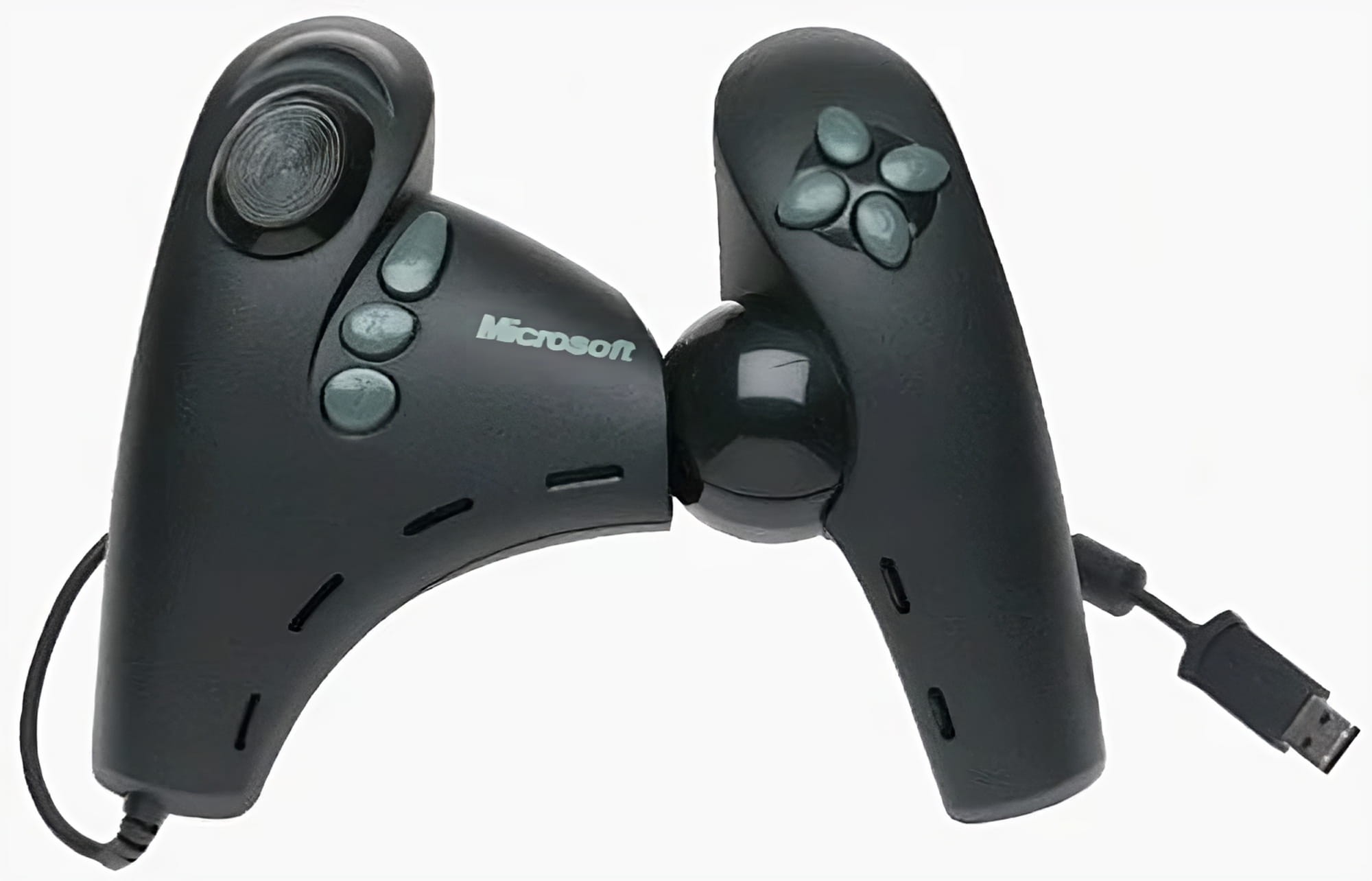
A brief history of ridiculous hardware fads we all bought into.
(Image credit: Future)
This article first appeared in PC Gamer magazine issue 378 in December 2022, as part of our Tech Tales series. Every month we talk about the ups and downs of PC hardware, with a look back on our own history with the hobby.
Part of our culture is the need to go beyond what’s strictly necessary in order to run a game and control it. Since there have been PC games, there’s been an industry adjacent to it that plays on that desire, promises us new and improved ways to interact with our virtual worlds, assures us we’ll look impossibly cool doing it too, then asks us for $300.
Without the innovations of PC gaming’s hardware manufacturers, we wouldn’t have arrived at such a high standard for input devices. Mice that NASA could probably trust to control a rocket launch and calculate a trip to Saturn. Keyboards that will still be registering inputs correctly when we’re just biomass in the ground. And the greatest innovation in PC gaming history: RGB lighting.
But the R&D that paved the way for our favourite peripherals was funded by sales of gaming snake oil. The dusty doohickeys we bought for full price in 2003 and almost immediately retired to our attics or the bag under the stairs where every modem we’ve ever owned lives. In short, it’s been hit and miss for gaming hardware. We’ve all bought into fads, and maybe it’s time for an amnesty.
(Image credit: Microsoft)
The story of this writer’s dalliances in dead tech begins in 1999. Microsoft—yes, that Microsoft—released a controller for Windows PCs that was intended for first-person shooters. You saw it all over games mags, held by actors who could scarcely conceive of the blistering action they were apparently a part of. It was as though they were hanging onto this thing for dear life. Its name? The SideWinder Dual Strike.
This striking gamepad retailed for one hundred English pounds (or $88 in the US). That’d buy you three full-price PC games and a re-release in 1999, or a semi-detached in Lowestoft. It didn’t look anything like console controllers, this thing was more like two joysticks mating. On the left-hand side, a D-pad and three buttons. On the right, four buttons were arranged on the front of a flightstick, attached to the left-hand piece by a giant ball. The idea was that this ball negated the need for mouse aiming in shooters. You had all the axes and inputs of a mouse and a keyboard, right there in your hands.
Of course, the reality felt like trying to play System Shock 2 by solving a Rubik’s Cube. Like so many tech fads, it was a solution to a problem that had never existed in the first place. Playing shooters on a mouse and keyboard worked brilliantly, even on trackball mice and before the days of a unified WASD control scheme. This £100 torture device I’d just bought made even walking around in first-person a profoundly fiddly endeavour, but I’d learned a valuable lesson.
I knew to avoid the Thrustmaster Frag Master, a rival to the Sidewinder Dual Strike that looked like conjoined joystick twins on a weighing scale. I even eyed the original Razer Boomslang, which offered flashy ergonomics and frankly unnecessary size, with deep suspicion.
(Image credit: Thrustmaster)
As the ’90s gave way to the noughties, novelty controllers rarely made it to market anymore but our money still wasn’t safe. There were new menaces to our setups and common sense, and at the head of the rabble was the 3D monitor. This incredible breakthrough would allow you to see game worlds and movies like never before, they said over and over again in increasingly desperate tones until 3D was declared dead at some point in 2013. All you had to do was pay a massive premium, wear some glasses whenever you wanted to use your PC, load up a title from a small list of supported software, and—blam!—3D. Unfortunately, not only did 3D panels turn game UIs into migraine-inducing nightmares, they also invariably looked like dark, blurry pop-up books. At least you could still use your expensive monitor in 2D.
(Image credit: Zalman)
Just out of the spotlight, there was the mouse DPI arms race. For a solid decade or more, peripheral brands proudly sold us new models on the basis of enormous DPI numbers, even though anything above 2,000 is impossible to actually use. It took the rise of pro gamers and their 400 DPI settings for us to wise up to that one.
It gets you thinking, doesn’t it? Which ticking timebomb of faddiness will we be laughing at in ten years’ time? Blu-ray drives (physical media died), the Steam controller (cheap plastic nonsense), and SLI (never worked properly) are strong candidates, but what about this: will RGB still reign in 2032, and if it doesn’t, how will that make today’s streamer setups look? And are we nearly ready to admit that mechanical keyboards are actually very difficult to type on? Or maybe we just weren’t ready for the Sidewinder Dual Strike. It’d only take one stream of Shroud winning PUBG with one…






